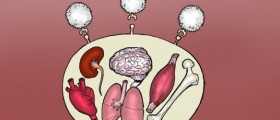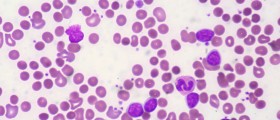Autoimmune deficiency is a condition when the immune system attacks the body cells and tissues due to the immune system weakness. We all know that the main immune system function is to protect our body from external agents such as bacteria, viruses, and other things that can be a potential danger to our body. In the case of the autoimmune deficiency condition, completely the opposite thing occurs, and the immune system starts attacking the body itself.
The autoimmune deficiency is hereditary in most cases. There are a lot of cases where autoimmune deficiency develops during pregnancy, but there are many types of autoimmune disorders that can affect people of both genders, regardless of their age.

When someone`s immune system starts slowly to attack blood vessels, red blood cells, and tissues that have the role of connecting the endocrine, digestive, and nerve system, then it is said that he/she suffers from autoimmune system deficiency.
- In this UK population-based study, we used linked primary and secondary electronic health records from the Clinical Practice Research Datalink (CPRD), a cohort that is representative of the UK population in terms of age and sex and ethnicity. Eligible participants were men and women (no age restriction) with acceptable records, approved for Hospital Episodes Statistics and Office of National Statistics linkage, and registered with their general practice for at least 12 months during the study period.
- We calculated age and sex standardised incidence and prevalence of 19 autoimmune disorders from 2000 to 2019 and used negative binomial regression models to investigate temporal trends and variation by age, sex, socioeconomic status, season of onset, and geographical region in England. To characterise co-occurrence of autoimmune diseases, we calculated incidence rate ratios (IRRs), comparing incidence rates of comorbid autoimmune disease among individuals with a first (index) autoimmune disease with incidence rates in the general population, using negative binomial regression models, adjusted for age and sex.
- Among the 22 009 375 individuals included in the study, 978 872 had a new diagnosis of at least one autoimmune disease between Jan 1, 2000, and June 30, 2019 (mean age 54·0 years [SD 21·4]). 625 879 (63·9%) of these diagnosed individuals were female and 352 993 (36·1%) were male.
- Over the study period, age and sex standardised incidence rates of any autoimmune diseases increased (IRR 2017-19 vs 2000-02 1·04 [95% CI 1·00-1·09]). The largest increases were seen in coeliac disease (2·19 [2·05-2·35]), Sjogren's syndrome (2·09 [1·84-2·37]), and Graves' disease (2·07 [1·92-2·22]); pernicious anaemia (0·79 [0·72-0·86]) and Hashimoto's thyroiditis (0·81 [0·75-0·86]) significantly decreased in incidence.
- Together, the 19 autoimmune disorders examined affected 10·2% of the population over the study period (1 912 200 [13·1%] women and 668 264 [7·4%] men). A socioeconomic gradient was evident across several diseases, including pernicious anaemia (most vs least deprived area IRR 1·72 [1·64-1·81]), rheumatoid arthritis (1·52 [1·45-1·59]), Graves' disease (1·36 [1·30-1·43]), and systemic lupus erythematosus (1·35 [1·25-1·46]).
- Seasonal variations were observed for childhood-onset type 1 diabetes (more commonly diagnosed in winter) and vitiligo (more commonly diagnosed in summer), and regional variations were observed for a range of conditions.
- Autoimmune disorders were commonly associated with each other, particularly Sjögren's syndrome, systemic lupus erythematosus, and systemic sclerosis. Individuals with childhood-onset type 1 diabetes also had significantly higher rates of Addison's disease (IRR 26·5 [95% CI 17·3-40·7]), coeliac disease (28·4 [25·2-32·0]), and thyroid disease (Hashimoto's thyroiditis 13·3 [11·8-14·9] and Graves' disease 6·7 [5·1-8·5]), and multiple sclerosis had a particularly low rate of co-occurrence with other autoimmune diseases.
The symptoms are not the same for every person, and it is a real problem to predict what the immune system will attack next. Because the immune system is occupied with attacking its own body, the external agents are left free to do whatever they want, and our body is liable to develop conditions that were defended by our immune system. As time passes by, our body is becoming more and more weak.
Causes of Auto Immune Deficiency
The exact cases that lead to the development of autoimmune deficiency are not determined, but according to the experts, some are said to lead to this condition. These causes include genetics or hereditary predisposition, pregnancy, excessive iodine, anxiety, toxins, external viruses, and the immune system that has weakened due to long abuse of substances.
Auto Immune Deficiency Syndrome
Acquired Immune Deficiency Syndrome or widely known as AIDS is one of the autoimmune disorders. It is caused by an external virus HIV. The result of this condition is a very fast and severe weakening of the body. This onsets many other viruses and bacteria to attack our body, which makes the body liable to many other diseases. Sadly, many people suffer from this condition, and the cure for AIDS isn’t discovered yet.
But, here we write about another autoimmune deficiency that isn’t dangerous as AIDS. If this disorder develops in a child, its cause is most likely to be linked to genetics. Then, the complete alteration of the child’s diet and lifestyle is required.
Cure and Treatment
As we don’t know the exact cause of autoimmune deficiency syndrome, we don’t have the proper cure for it. The only thing that we can do to help a person suffering from it is to use anti-inflammatories and other medications. We have to ensure that this person isn’t exposed so much to external factors that may attack the body even more. It is important to learn how to live with it and always think optimistically.

















Your thoughts on this
Loading...